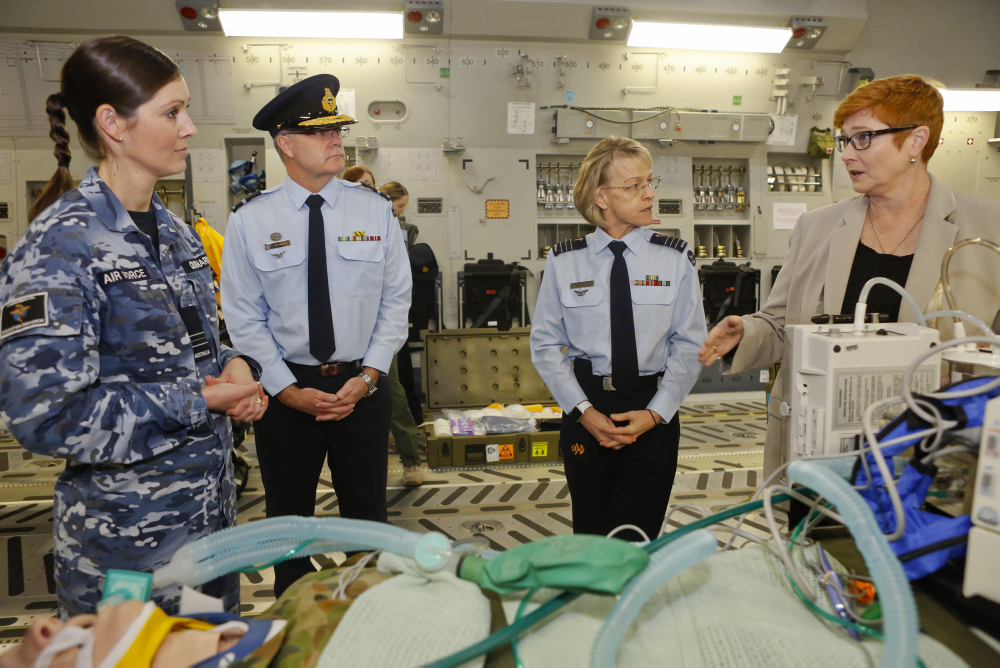Air Commodore Ken Robinson on the Challenges of Mobile Basing
During our visit to Australia in March 2018, we had a chance to talk with the Commander of the RAAF’s Combat Support Group, Air Commodore Ken Robinson at his office at RAAF Amberley.
With a country of the size of the United States but only about 25 million people and a much smaller Air Force than does the United States, it is far to say that even operating domestically, the RAAF is an expeditionary air force.
This means that it has to work its own territorial support in ways that mesh effectively with support provided for out of area operations.
It means as well that effective logistical footprint and significant use of reserves is a key part of how Australia addresses air combat support. 25% of the RAAF’s rserve budget goes to CSG activities.
And given the engagement of allies coming to Australia to exercise with the ADF, consideration must be given to support for allies as well when they arrive and operate in the Australian continent.
A sense of the scope of the challenge domestically can be seen in the graphic below which identifies the basic locations of the CSG correlated with the basing situation in Australia:

What mobile basing might mean in today’s world is a work in progress, but one which will need to deserve more attention going forward….
The RAAF works closely with the USAF as well both in terms of cross learning with the USAF’s Contingency Response Groups as well as the USAF sorting through the growing demand for supporting mobile basing in the Pacific, in terms of flexibly moving away from an over-reliance on fixed basing in the region in times of crisis.
But as the Air Commodore pointed out, the two Contingency Response Groups in the USAF can focus full time on contingency response whereas the RAAF has to include that capability within the overall force.
We discussed at some length the challenge of rethinking mobile basing in times of crisis, which is a work in progress.
“We are having to reacquaint ourselves with some tasks and challenges which we parked to the side a bit while we were in the Middle East for so long.
“We did not have to worry so much about mobile basing to counter the principal threats in that theatre.
“The mindset is in transition now.”
This clearly is an Army and Air Force challenge.
“We are good at supporting maneuver with our tactical transport aircraft and Australia’s Army aviation capability, including the Tiger Reconnaissance Helicopter, but what we need to do is move to the next level of support to maneuver the most lethal part of our air power capability across a range of airfield options.”
Core capabilities such as providing fuel for air systems when operationalized for a mobile airbasing force on Australian territory are clearly different from supporting a fixed airbase.
For example, “expeditionary fuel capabilities is something that’s very much on the forefront of my mind. Lean and agile support packages to operate expeditionary airfields are also key, so that we can offer the best possible maneuver options to the aviators without tying down strategic airlift.”
Photo: Minister of Defence, Senator the Honourable Marise Payne (far right) learns about training for medical emergencies in the C-17A Globemaster with (L-R) Squadron Leader Riannon Quemard, Air Commodore Ken Robinson and Wing Commander Merilyn White in the simulator at RAAF Amberley.
Australian Department of Defence.
July 7, 2017

